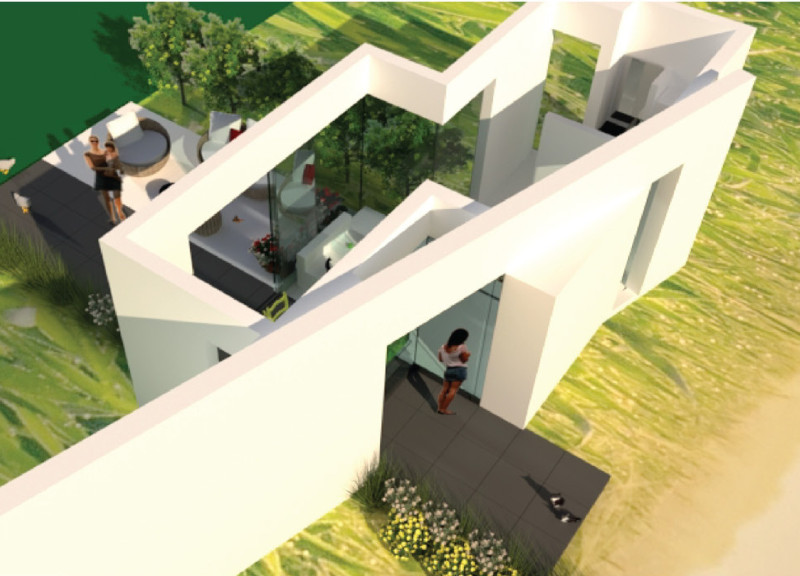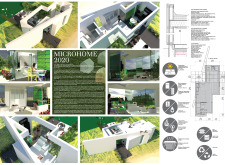5 key facts about this project
Microhome 2020 is a residential design that prioritizes sustainability and efficiency. Located in a context where environmental issues and rising construction costs are significant concerns, the focus is on creating living spaces that promote self-sufficiency while integrating with the natural environment. The design centers on a simplified building process, using a unitized package that allows for off-site construction and quick assembly on-site.
Design Methodology
The approach taken allows for reduced construction times and lower labor costs, making green living more accessible. This streamlined process is an important step forward for practical housing solutions that do not compromise ecological values. It reflects a thoughtful response to current challenges in residential architecture.
Energy Efficiency
A notable feature of the design is the use of Transparent Luminescent Solar Concentrators (TLSC). These solar windows let in plenty of natural light while efficiently converting sunlight into electricity. This combination of functions helps the home become less reliant on traditional energy sources, enhancing its overall energy efficiency.
Water Conservation Systems
Another significant innovation is the Hydraloop technology, which enables a greywater recycling system within the residence. This system significantly reduces mains water use, addressing both resource conservation and environmental concerns. Such thoughtful design aligns with the goals of modern sustainable living.
Indoor Biodiversity
The presence of an indoor green living wall adds another layer of ecological awareness. It supports various herbs and plants that improve indoor air quality and contribute a natural aesthetic to the interior space. This living feature creates a pleasant atmosphere and fosters a deeper connection to nature for the occupants.
Microhome 2020 combines practical technology with thoughtful design to create a living environment that emphasizes sustainability. The work results in an inviting space that reflects a balance between modern living and an appreciation for the natural world.



















































